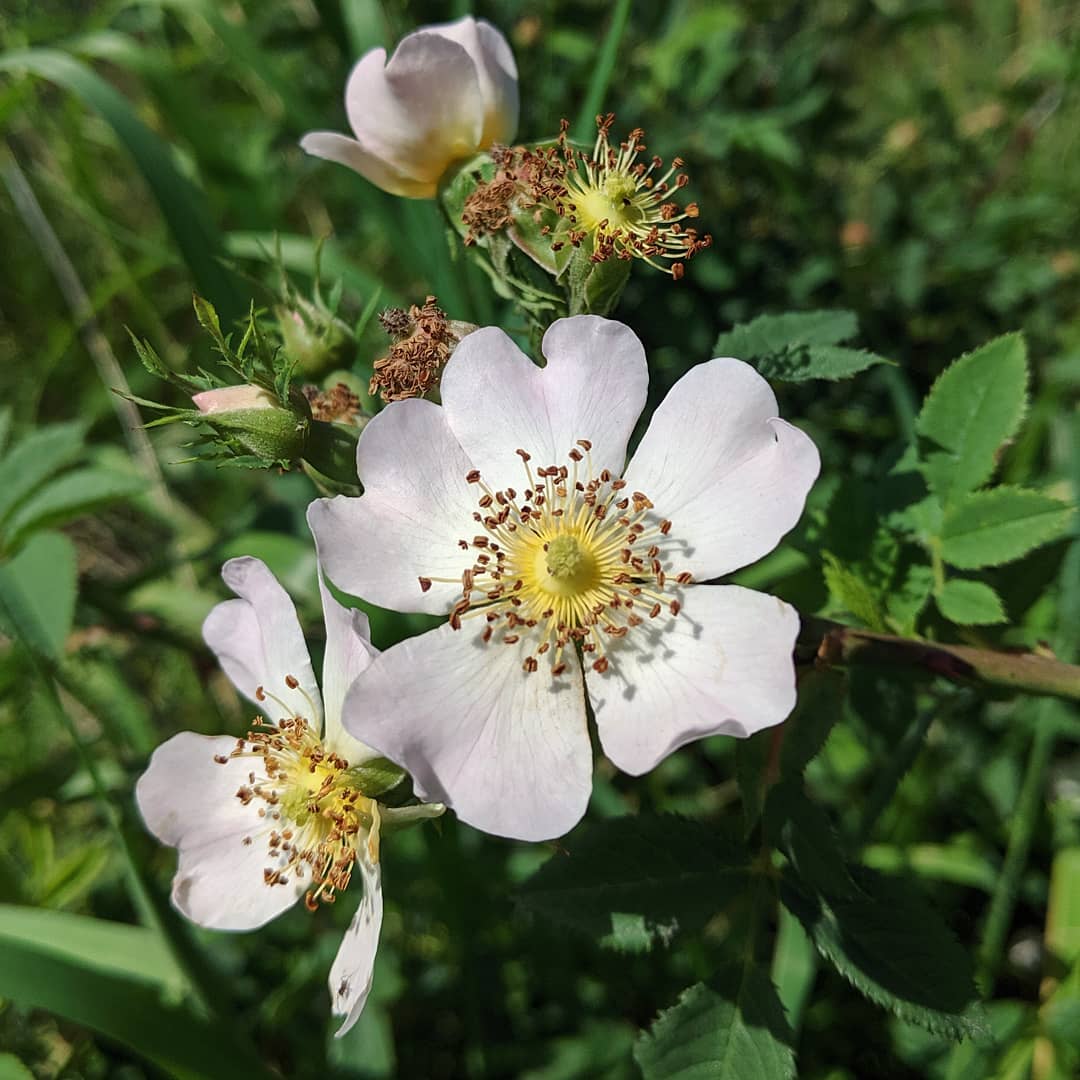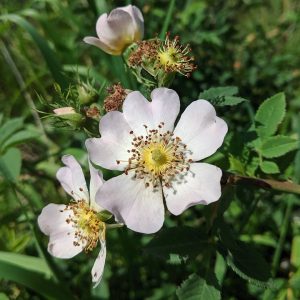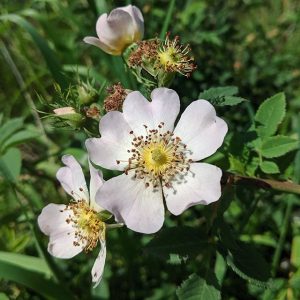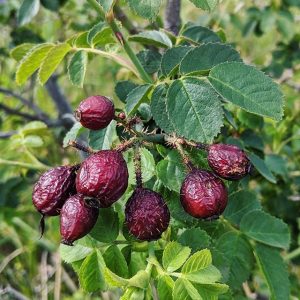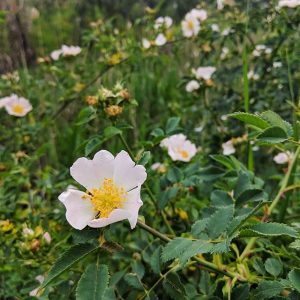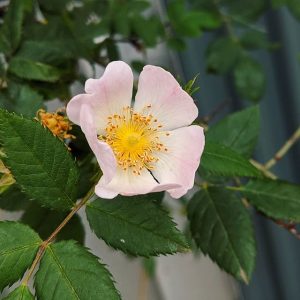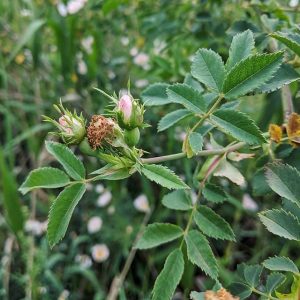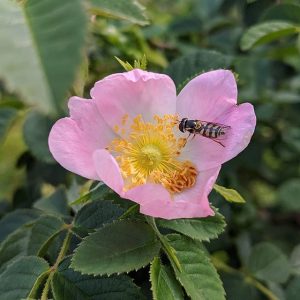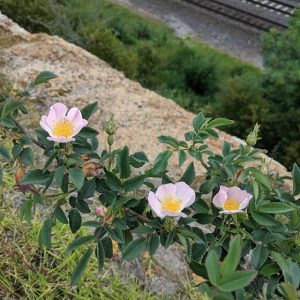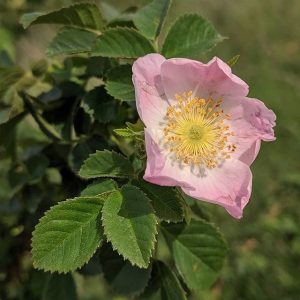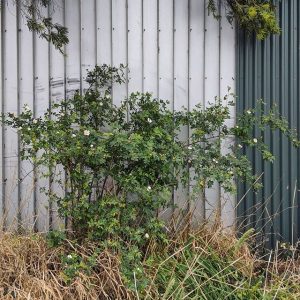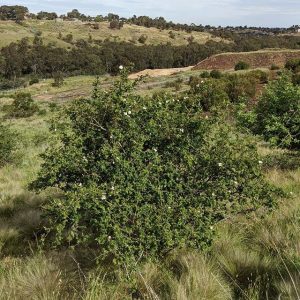Sweet Briar (Rosa rubiginosa), brought to Australia as grafting stock, a sometimes hedge and a domestic source of rose hip tea. Spread by birds and forming a resilient rootstock that survives superficial efforts at removal, this European species became ubiquitous across the continent’s temperate southeast.
F. von Mueller collected the species in the Adelaide Hills in 1851, while later collections in Tasmania in 1876 and from Studley Park in Melbourne in 1883 presaged Sweet Briar’s forthcoming ubiquity across SE Australia. In Victoria it was first proclaimed under the Thistle Act in the 1890s; it would later be reproclaimed under the Noxious Weeds Act.
A 1906 writer, noting the species’ ‘gradual occupation’ of grazing land in NSW, reflected on its contradictory meanings. ‘This is one of the plants imported by early immigrants, to remind them of old associations… those early experimenters did not foresee what a pest the briar would become to succeeding generations, or they would have been more careful in the distribution of it to their friends.’
As we know to expect of this kind of weed, some Victorian graziers and their political representatives lodged protests against its proclamation and campaigned against enforcement. The plant’s identification under the Thistle Act had been resisted on purportedly ‘scientific’ grounds as a misnomer, when it was later reproclaimed noxious the opposition moved to complaints against the practicality and value of enforcement. Critics complained that Sweet Briar could not reasonably be removed from rough terrain where it had established, that in many places it was ‘not a nuisance’ or was already destroyed when it did become one, and that the plants were of value as an erosion control and an occasional fodder (even if they were an acknowledged harbour for rabbits).
The species remains a declared weed today, and despite assurances it is an abiding nuisance, seen here in various riparian, infrastructural and grassland positions across the metropolitan north and west.
View Original Post on Instagram
Search for information about Rosa rubiginosa in the Flora of Victoria
View information and occurrences of Rosa rubiginosa on the Atlas of Living Australia
